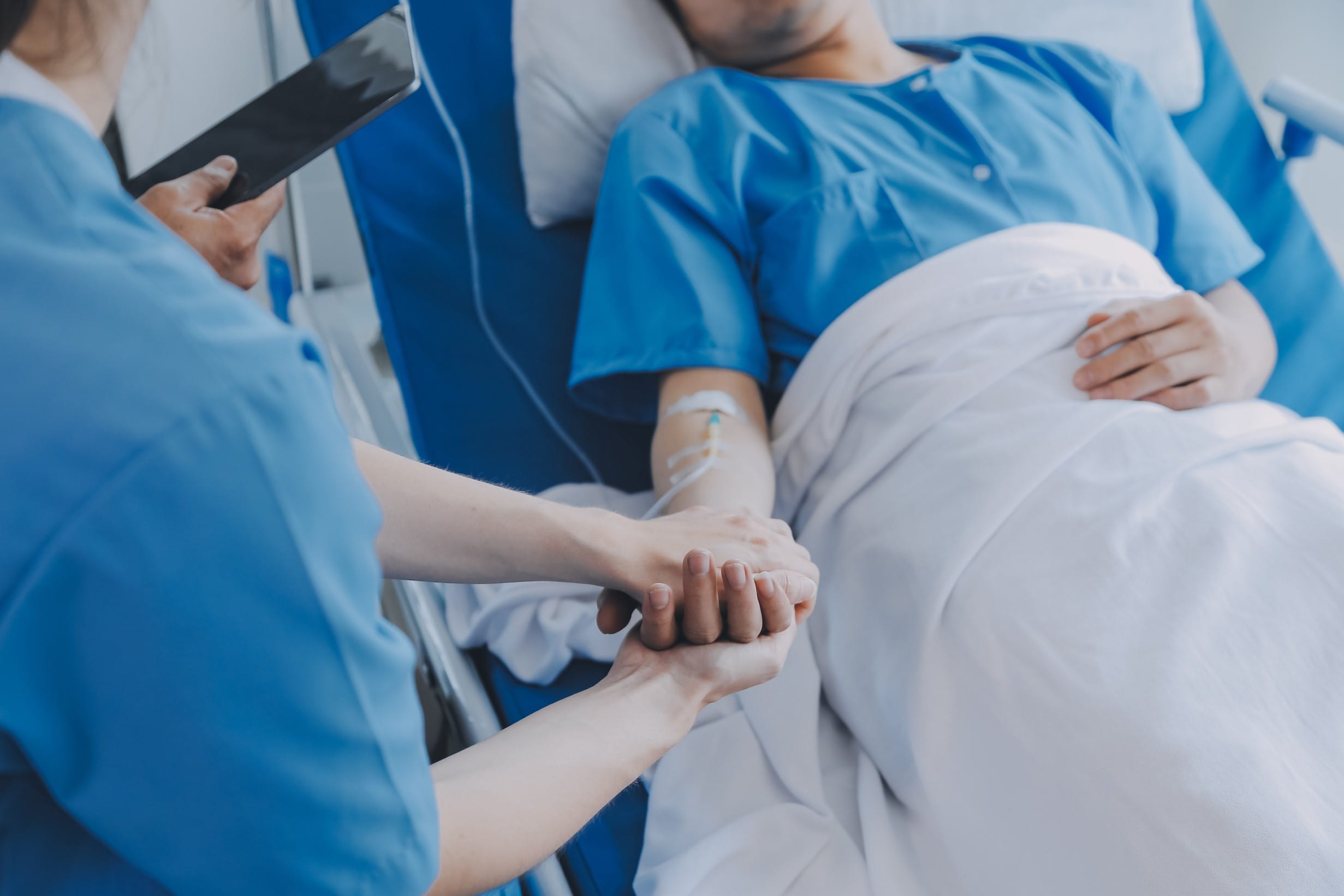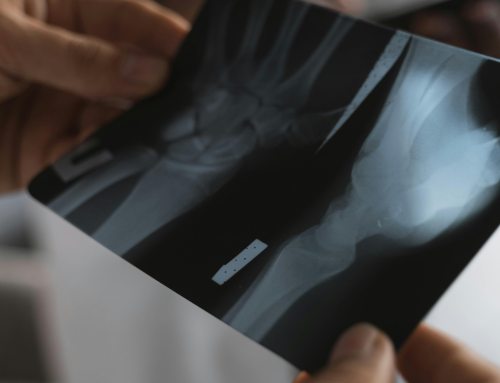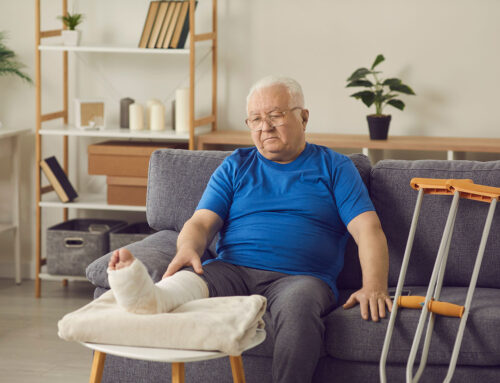Fracture surgery recovery can be a challenging path, but with the right tools, guidance, and mindset, it’s possible to heal efficiently and get back to the activities you love. Whether you’ve recently undergone surgery or are preparing for one, understanding what to expect can help you manage pain, avoid complications, and accelerate recovery.
While traditional healing relies on time and rehabilitation, innovative therapies like Low-Intensity Pulsed Ultrasound (LIPUS) can speed up the process, helping you heal faster and return to the life you love.
In this article, we’ll break down the stages of recovering from fracture surgery, and effective pain management strategies while showing you how LIPUS therapy can promote a faster, stronger recovery.

What to Expect During Fracture Surgery Recovery
Fracture surgery recovery involves more than just waiting for the bone to heal. It’s a process that requires patience, rehabilitation, and the right support. Whether you’ve had plates, screws, or other hardware implanted to stabilize the fracture, your body still has to do the hard work of repairing bone tissue and restoring mobility.
Here’s a general healing timeline to help you know what to expect:
First Few Days After Surgery:
- Pain, swelling, and stiffness are common as your body starts the healing process.
- Your doctor may prescribe medications and recommend elevating the limb to minimize swelling.
- Rest is essential, but gentle movement (if allowed) can help improve circulation.
Weeks 2-6: Early Recovery & Mobility Rebuilding
- Light physical therapy or guided movement usually begins to help regain strength.
- The bone is still healing, so weight-bearing activities may be limited depending on your doctor’s advice.
- Stiffness and discomfort are normal, but staying active within safe limits can aid recovery.
Weeks 7-12: Strength & Stability Improvements
- You should notice increased mobility, reduced pain, and improved function.
- Follow-up X-rays or check-ups will help ensure the fracture is healing correctly.
- Depending on your progress, you may start more weight-bearing exercises to rebuild strength.
Beyond 3 Months: Long-Term Healing & Bone Strengthening
- The fracture should be mostly healed, but full recovery can take several months to a year, depending on the severity of the break and your overall health.
- LIPUS therapy, strength training, and proper nutrition can help reinforce bone density and long-term stability.
Healing after fracture surgery happens at your own pace. Following your doctor’s guidance, staying active within limits, and incorporating advanced recovery tools like LIPUS therapy can help you heal faster and more effectively.
Tips for Managing Pain and Avoiding Complications
Pain and discomfort are natural parts of fracture recovery surgery, but managing them effectively can make a significant difference in your healing process. Proper pain control not only improves comfort but also helps you stay active, avoid complications, and heal more efficiently.
Here are a few strategies to manage pain and reduce recovery risks:
✓ Follow Your Pain Management Plan
-
- Take prescribed medications as directed to control pain and inflammation.
- If you experience side effects or feel your pain isn’t well-managed, discuss alternative options with your doctor.
✓ Keep Moving, But Safely
-
- Gentle range-of-motion exercises (as advised by your healthcare provider) can prevent stiffness and improve circulation.
- Avoid prolonged immobility, as it can increase swelling and slow healing.
✓ Use Ice & Elevation to Reduce Swelling
-
- Apply ice packs (wrapped in a towel) for 15-20 minutes at a time to help with pain and swelling.
- Keep the affected limb elevated to reduce fluid buildup and minimize discomfort.
✓ Monitor for Signs of Complications
-
- Watch for redness, excessive swelling, warmth, pus, or fever, as these can be signs of infection or delayed healing.
- If you experience sharp, worsening pain that doesn’t improve with rest or medication, contact your doctor immediately.
✓ Stay Positive & Stay Engaged in Recovery
-
- Healing after fracture surgery takes time, and frustration is normal. But, maintaining a positive mindset can keep you motivated.
- Setting small recovery goals (such as walking a few extra steps each day) can boost confidence and progress..
Technologies like LIPUS therapy can also help reduce pain and promote faster healing. Ask your doctor if Low-Intensity Pulsed Ultrasound (LIPUS) could be a helpful addition to your recovery plan.
How LIPUS Enhances Post-Surgical Recovery
While your body has the natural ability to heal, certain factors (like the use of plates, screws, or age-related bone loss) can slow the recovery process. LIPUS is an advanced, clinically proven therapy that helps accelerate healing and improve recovery outcomes.
Here’s how LIPUS therapy supports post-surgical bone healing:
Stimulates Bone Healing
LIPUS works by enhancing surgical fracture recovery with ultrasound therapy to the fracture site, activating cellular repair mechanisms, and promoting the formation of new bone tissue.
Reduces Healing Time
Research shows that LIPUS can significantly shorten the recovery timeline after fracture surgery involving plates, screws, or other hardware. This means less downtime and a faster return to daily activities.
Non-Invasive, Painless, Easy to Use
The Melmak LIPUS device requires just 20 minutes of daily use and can be used at home. No clinic visits or invasive procedures are required!
Supports Recovery in Complex Cases
If you’re experiencing a delayed or non-union fracture, LIPUS can stimulate bone healing at a cellular level, making it especially beneficial for patients with slow or impaired healing.
Incorporating LIPUS Into Your Recovery Plan
Adding LIPUS therapy to your post-surgical healing routine is simple and highly effective. The Melmak device is portable, making it easy to use at home or even on the go.
Here’s how to get the most out of it:
1. Use It Daily for Best Results
Set a consistent schedule and use LIPUS for 20 minutes daily to support continuous bone regeneration.
2. Combine LIPUS with Other Recovery Therapies
LIPUS works alongside physical therapy, strength exercises, and proper nutrition to maximize healing.
3. Track Your Progress Over Time
Keep a recovery journal or note changes in pain levels, mobility, and strength to see how LIPUS is helping you heal.
Did You Know? Many orthopedic specialists recommend LIPUS therapy as part of an enhanced recovery protocol for post-surgical fractures! Fracture Healing provides LIPUS solutions to both patients and practitioners.
Regaining Mobility and Confidence
Regaining mobility after fracture surgery isn’t just about physical recovery. It’s also about rebuilding confidence in your movement and strength. As your body heals, you may feel hesitant or uncertain, but with the right approach, you can safely restore function and independence.
Here are a few tips to help you move with more confidence and ease:
→ Start Slow & Listen to Your Body
-
- Avoid pushing too hard too soon. Begin with gentle stretches, range-of-motion exercises, and light weight-bearing activities as recommended by your doctor or physical therapist.
- Pain and stiffness are normal, but sharp or worsening pain is a sign to adjust your routine.
→ Use Assistive Devices When Needed
-
- Mobility aids like crutches, walkers, or braces provide stability and protection as your body regains strength.
- Gradually transition away from support devices when you feel stable, but don’t rush the process.
→ Stay Consistent with Rehabilitation
-
- Physical therapy and movement-based recovery are essential for regaining strength. Stick to your rehab plan even on days when progress feels slow.
- Small, consistent efforts will lead to long-term improvement.
→ Celebrate Every Milestone…Big or Small
-
- Whether it’s taking your first steps unaided, climbing stairs, or completing a therapy session, every achievement matters.
- Keeping track of progress in a journal can boost motivation and remind you how far you’ve come.
Consider incorporating LIPUS therapy to support bone strength and faster healing, allowing you to regain mobility more efficiently.
Heal Faster After Surgery: Why Melmak LIPUS Is the Smart Choice
When it comes to post-surgical fracture recovery, you need a solution that is effective, easy to use, and backed by science. The Melmak LIPUS device is designed to help you heal faster, reduce complications, and regain mobility with confidence.
Here’s what makes Melmak LIPUS an excellent choice:
Clinically Proven to Accelerate Healing
Research shows that LIPUS therapy can speed up bone healing by 38%, making it a game-changer for patients recovering from surgery with plates and screws.
Trusted by Healthcare Professionals
Orthopedic specialists and physical therapists recommend LIPUS as a safe, non-invasive way to support fracture healing and reduce recovery time.
Pain-Free, Non-Invasive, and Easy to Use
The Melmak device requires just 20 minutes of daily use and can be used at home.
Ideal for Delayed or Complex Healing Cases
If you’re recovering from a non-union fracture or slow-healing surgical site, LIPUS provides targeted bone stimulation to encourage proper healing and prevent complications.
Take Charge of Your Healing Process
Fracture surgery recovery takes time, patience, and the right tools. By following your recovery plan, managing pain effectively, and incorporating advanced therapies like LIPUS, you can support your body’s natural healing process and get back to the activities you love.
At Fracture Healing, we’re here to guide you at every stage. Whether you’re recovering from surgery, dealing with a slow-healing fracture, or exploring innovative treatments like the Melmak LIPUS device, our goal is to help you heal better, faster, and with fewer complications.
Explore your best options for healing. Contact Fracture Healing to learn how LIPUS therapy can accelerate your healing and help you regain strength sooner.
What tips do you have for those recovering from a fracture? Share your thoughts with our readers in the comments below.





